
EUROPEAN JOURNAL OF EPIDEMIOLOGY
Scope & Guideline
Connecting researchers to the forefront of epidemiological science.
Introduction
Aims and Scopes
- Epidemiological Cohort Studies:
The journal publishes extensive research on cohort studies, particularly those that analyze long-term health outcomes, risk factors, and the impact of various exposures on disease incidence and mortality. - Public Health and Policy Implications:
Research that provides insights into public health practices, policies, and interventions is a core focus, emphasizing studies that can inform health systems and improve population health outcomes. - Methodological Innovations:
The journal highlights advancements in epidemiological research methodologies, including novel statistical approaches, causal inference techniques, and the application of Mendelian randomization. - Chronic Disease Epidemiology:
A significant portion of the published studies addresses chronic diseases, including cancer, cardiovascular diseases, and neurodegenerative disorders, exploring their epidemiology and associated risk factors. - Environmental and Lifestyle Factors:
Research examining the influence of environmental exposures, lifestyle choices, and dietary patterns on health outcomes is a consistent theme, reflecting the journal's commitment to understanding modifiable risk factors.
Trending and Emerging
- Longitudinal and Life-Course Studies:
There is a growing emphasis on longitudinal and life-course epidemiology, which examines how exposures and health outcomes develop over time, shedding light on the complexities of disease progression. - Mendelian Randomization and Genetic Epidemiology:
The application of Mendelian randomization and genetic epidemiology is increasingly prevalent, allowing researchers to infer causal relationships between exposures and outcomes using genetic variants. - Mental Health Epidemiology:
Research focusing on mental health, particularly the impact of socio-economic factors and lifestyle on mental health outcomes, is becoming more prominent, reflecting a broader recognition of mental health as a critical public health issue. - Impact of Climate Change on Health:
Emerging studies are beginning to explore the health impacts of climate change and environmental factors, indicating a shift towards understanding how global environmental changes affect population health. - Health Disparities and Social Determinants of Health:
There is an increasing focus on health disparities and the social determinants of health, aiming to understand how socio-economic status, education, and environment influence health outcomes across different populations.
Declining or Waning
- Infectious Disease Epidemiology:
Research specifically focused on infectious diseases, while still present, has decreased in frequency, possibly due to the shift towards chronic disease and non-communicable disease research in light of the COVID-19 pandemic. - Classic Randomized Controlled Trials (RCTs):
The journal's emphasis on traditional RCTs has diminished as newer observational and cohort study designs gain popularity, particularly in the context of complex health interventions. - Historical Epidemiological Studies:
There appears to be a declining interest in studies that primarily focus on historical epidemiological analyses, as contemporary research increasingly prioritizes real-time data and current health issues. - Pharmacological Interventions:
Studies specifically evaluating the effects of pharmacological interventions on health outcomes have become less frequent, potentially overshadowed by a focus on lifestyle factors and preventive health. - Single-Condition Studies:
There is a noticeable decrease in research that exclusively focuses on single diseases or conditions, with a growing trend towards multi-condition or syndromic approaches in epidemiological research.
Similar Journals
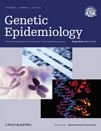
GENETIC EPIDEMIOLOGY
Pioneering Research at the Intersection of Genetics and EpidemiologyGENETIC EPIDEMIOLOGY is a pioneering journal published by Wiley that bridges the fields of genetics and epidemiology to advance our understanding of the genetic underpinnings of health and disease. Established in 1984 and converging into its 40th year of impactful research in 2024, this journal offers a key platform for the dissemination of innovative research findings, statistical methods, and applications in both clinical genetics and epidemiological practices. With a robust presence in Scopus, ranking in the second quartile (Q2) for both epidemiology and clinical genetics, it enjoys a significant reputation among its peers. The journal does not currently offer open access, but it is vital for researchers, professionals, and students committed to exploring the evolving landscape of genetic influences on population health. Its rich repository of studies not only enhances knowledge but also informs public health policies and clinical practices worldwide, making it an indispensable resource for those seeking to innovate and apply genetic research in the quest for better health outcomes.

Bangladesh Journal of Medical Science
Your Gateway to Cutting-edge Medical ResearchBangladesh Journal of Medical Science, published by IBN SINA TRUST, is a prominent open access journal dedicated to the dissemination of innovative research in the field of medicine. Since its inception in 2009, this journal has aimed to bridge the gap in medical knowledge, focusing on a diverse array of sub-disciplines within the field, thus extending its relevance to both local and international audiences. With an ISSN of 2223-4721 and E-ISSN 2076-0299, it has gained recognition in the academic community, evidenced by its Q3 category rank in Medical (Miscellaneous) and a notable placement in the 58th percentile of general medicine according to Scopus rankings. The journal accepts original research articles, reviews, and case reports, making it a vital resource for researchers, professionals, and students alike. With an objective to provide open access to high-quality medical science literature, the Bangladesh Journal of Medical Science fosters an environment of scholarly exchange, contributing to the ongoing advancement of healthcare practices and medical education in Bangladesh and beyond.
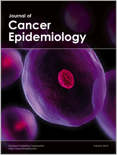
Journal of Cancer Epidemiology
Fostering collaboration to illuminate cancer's epidemiological landscape.The Journal of Cancer Epidemiology, published by HINDAWI LTD, is a premier open access journal that has been disseminating vital research findings since 2008. With ISSN 1687-8558 and E-ISSN 1687-8566, this journal is dedicated to enhancing our understanding of cancer's epidemiological factors, thereby fostering advancements in public health, genetics, and environmental health. The journal's current quartile ranking places it in Q3 for Epidemiology and Public Health, as well as Q4 for Genetics, reflecting its growing influence in these fields. As of 2023, it holds respectable Scopus rankings, including a rank of #73 in Epidemiology, positioning it within the 51st percentile. Based in the United States with an address in London, this journal represents a crucial platform for researchers, professionals, and students eager to contribute to the global fight against cancer. For those passionate about uncovering insights into cancer risk factors and trends, the Journal of Cancer Epidemiology offers a comprehensive repository of high-quality research accessible to all.

Scientific Chronicles
Pioneering Research for a Global Audience.Scientific Chronicles is a distinguished open-access journal published by TZANEIO GENERAL HOSPITAL, specializing in a broad range of scientific disciplines, from biomedical research to environmental sciences. Since its inception in 2014, this journal has dedicated itself to disseminating high-quality research and fostering collaboration within the scientific community. With the ISSN 1791-1362 and E-ISSN 2241-1666, it serves as a vital platform for researchers, professionals, and students to share their findings and innovations. The journal's commitment to accessibility ensures that groundbreaking research reaches a global audience, facilitating knowledge transfer and advancing the frontiers of science. As an open-access publication, Scientific Chronicles aims to bridge the gap between research and practical application, contributing significantly to the continuous advancement of scientific knowledge.
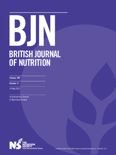
BRITISH JOURNAL OF NUTRITION
Exploring Innovative Solutions in Nutrition and DieteticsThe British Journal of Nutrition, a premier publication in the field of nutrition and dietetics, is brought to you by Cambridge University Press. Established in 1947, this journal has consistently provided a platform for groundbreaking research and innovation in the domain of nutrition, boasting an impressive converged timeline extending to 2024. Recognized for its high academic standards, it proudly holds a Q1 ranking in Medicine (miscellaneous) and a Q2 ranking in Nutrition and Dietetics as of 2023, reflecting its impact and relevance in the scientific community. With a Scopus rank of 75 out of 398 in Medicine and 38 out of 140 in Nutrition and Dietetics, the journal remains a vital resource for researchers, professionals, and students seeking to enhance their knowledge and understanding of nutritional science. While the journal is not open access, it offers a wealth of valuable insights, making it an essential addition to any academic collection focused on health and nutrition.

JOURNAL OF EPIDEMIOLOGY AND COMMUNITY HEALTH
Shaping tomorrow's health policies through rigorous research.JOURNAL OF EPIDEMIOLOGY AND COMMUNITY HEALTH, published by the esteemed BMJ PUBLISHING GROUP, stands as a leading journal in the fields of Epidemiology and Public Health. With an impressive impact factor and ranking in the Q1 quartile for both Epidemiology and Public Health categories as of 2023, it significantly contributes to the dissemination of critical research that shapes public health policies and practices globally. The journal has been a vital resource since 1978, continuously providing an academic platform for the latest advancements and discussions pertinent to community health, environmental concerns, and epidemiological studies. Researchers, professionals, and students alike depend on this influential publication for rigorous peer-reviewed articles, thereby enhancing its reputation as one of the top journals in the field. Despite the absence of Open Access options, the journal's scholarly contributions are evident, making it indispensable for anyone engaged in public health and epidemiological research.
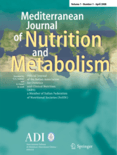
Mediterranean Journal of Nutrition and Metabolism
Empowering Researchers in Nutrition and MetabolismMediterranean Journal of Nutrition and Metabolism, published by IOS PRESS, is a leading platform dedicated to advancing the scientific discourse in the fields of nutrition and metabolism. Established in 2008, this journal addresses the increasing importance of dietary and metabolic research as it relates to human health. With an ISSN of 1973-798X and an E-ISSN of 1973-7998, it provides a vital resource for researchers and professionals aiming to explore the intricate relationships between nutrition, dietetics, and metabolic health. The journal is indexed in various categories, achieving notable rankings such as Q3 in Food Science and Nutrition and Dietetics, reflecting its commitment to rigorous scientific standards and impactful research. While the Mediterranean Journal of Nutrition and Metabolism currently does not operate under an Open Access model, it offers invaluable insights and findings that are essential for those dedicated to understanding and improving nutritional practices globally. By fostering collaboration and innovation, this journal serves as a cornerstone for scholars, supporting the dissemination of knowledge that enhances health outcomes across diverse populations.
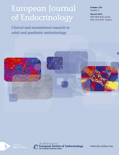
EUROPEAN JOURNAL OF ENDOCRINOLOGY
Fostering Collaboration in Endocrinology and BeyondEUROPEAN JOURNAL OF ENDOCRINOLOGY, published by Oxford University Press, stands as a premier international platform dedicated to advancing research in the burgeoning field of endocrinology, diabetes, and metabolism. Since its inception in 1994, this esteemed journal has gained recognition for its rigorous peer-reviewed articles and innovative studies, evidenced by its impressive Q1 rankings across multiple categories, including Endocrinology and Medicine. With a focus on disseminating critical findings and fostering interdisciplinary collaboration, the journal ranks 33rd out of 244 in Endocrinology, Diabetes, and Metabolism, and 20th out of 128 in Biochemistry, Genetics, and Molecular Biology according to Scopus metrics, positioning it in the top percentiles for researchers worldwide. Although it does not offer open access, the journal remains a vital resource for academics and practitioners alike who seek to stay at the forefront of endocrine research. The EUROPEAN JOURNAL OF ENDOCRINOLOGY continues to push the boundaries of knowledge, driving forward the understanding of complex hormonal functions and their clinical implications.

Clinical Epidemiology
Transforming health insights into impactful policies.Clinical Epidemiology is a premier journal dedicated to advancing the field of epidemiology and public health, published by DOVE MEDICAL PRESS LTD. With an impressive Q1 ranking in Epidemiology for 2023, this journal is recognized for its significant contributions to the understanding of disease patterns and health outcomes. As an Open Access journal since 2009, it ensures that cutting-edge research is accessible to a global audience, promoting knowledge dissemination and collaboration among researchers, healthcare professionals, and students. With a robust Scopus rank of 41 out of 148 in its category, evident through its 72nd percentile placement, Clinical Epidemiology serves as a vital resource for those seeking to inform public health policy and practice. Scholars from around the world are invited to submit their findings and insights, making it an invaluable platform for fostering innovation and excellence in epidemiological research.

Clinical Epidemiology and Global Health
Fostering global collaboration for impactful health solutions.Clinical Epidemiology and Global Health, published by Elsevier - Division Reed Elsevier India Pvt Ltd, is a leading open-access journal dedicated to the dissemination of research in the crucial fields of epidemiology and global health. With an ISSN of 2452-0918 and an E-ISSN of 2213-3984, this journal has been a platform for innovative studies since its inception in 2013, converging into a comprehensive resource through 2024. Operating from the Netherlands and ensuring accessibility from anywhere in the world since its transition to an open-access model in 2021, it fosters the global exchange of knowledge. The journal's impact is reflected in its current quartile rankings, including Q2 in Public Health, Environmental and Occupational Health and Q3 in Epidemiology, Infectious Diseases, and Microbiology. With a growing reputation bolstered by SCOPUS rankings that place it in the top percentiles, Clinical Epidemiology and Global Health stands as an essential resource for researchers, professionals, and students dedicated to advancing public health and epidemiological research.